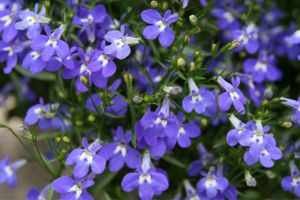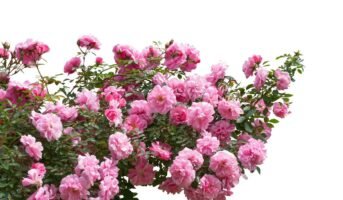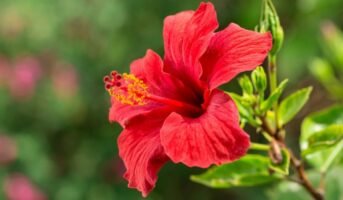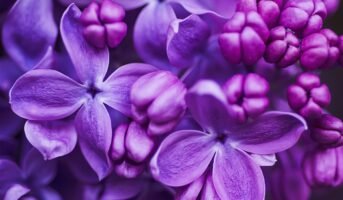Lobelia is a flowering plant that is native to Northern America. The scientific name of lobelia is also lobelia. This species is usually annual or perennial. It is not shrubby but sometimes a long tree is found in high elevations for mountains and tropical places. Lobelia has a wide variety of species available. The lobelia flower has five lobes with two lobes in the front and a lower fan formed. Lobelia has a maximum height of 4-18 inch and a width of 4-6 inch. There are 14 varieties of Lobelia.
Lobelia: Key facts
| Scientific name | Lobelia |
| Common name | Cardinal flower |
| Plant type | Perennial |
| Native | North America/ South Africa |
| Flower | Two-lipped |
How to grow lobelia?
Lobelia is grown in the gardens due to its attractiveness. Lobelia is famous for its blue bedding plants. The annual lobelias are called Lobelia erinus which are small and have different shades such as blue, pink, and white flower types.
The lobelia requires full sun or a partly shaded area. It requires moist soil. The annual type of lobelia does not need deadheading but needs pruning during mid-summer. Lobelia is grown in a wide variety of places. Lobelia has a different flower color but is unique for its sky blue color. It has a tiny white flower but has green foliage and a bronze tinge in its leaves.
The annual lobelia type grows anywhere with sun and partial shade. It is sown in the soil directly. Lobelia is sown 12 weeks before the frosting season. The seeds are sown in a well-lit area and space. After one week, the seeds grow out and they can be transplanted after reaching 4-6 inches high.
Uses of lobelia
Lobelia has different alkaloids or compounds that give therapeutic effects for humans. It is popular for caffeine, nicotine, and morphine. It has a chemical called lobeline that protects from many ailments. Lobelia is also an ornamental plant. Obelia is used in traditional medicine even though scientific research is less. There are ointments and tablets to treat illness through lobelia.
Bruises
Lobelia is known to be used as a painkiller. It reduces bruises and pains. Bug bites, sprains, and boils are treated with the help of lobelia. There is no research based on this cure even though traditional medicine uses lobelia.
Asthma and other respiratory disorders
Lobelia is present along various medications and it helps to treat many symptoms such as asthma attacks and wheezing. It also helps in coughing and tightness of the chest. The lobeline relaxes your airways which can stimulate breathing and clear the nose from mucus. It is good at treating pneumonia and the bronchitis of the body. It removes lung infections and difficulty of breathing.
Depression
The lobelia compounds help to protect the mood disorders which include depression. It blocks many receptors. Compounds that are found in lobelia may also help to protect against mood disorders, including depression. Depression is reduced with the help of stress hormones. However, there is no evidence-based research suggesting lobelia as an alternative to depression treatment.
Attention Deficit Hyperactivity Disorder (ADHD)
Lobelia reduces ADHD and allows the management of hyperactivity. It improves focus and gives an adequate amount of dopamine in the brain. ADHD does not allow a person to focus well and it affects their mental health overall. Lobelia is taken for ADHD to assist in the treatment.
Used to quit smoking
Lobelia is a potential drug against drug abuse. It is considered to help against smoking. Lobelia is similar to the drugs present in cigarettes. It has the same effects as nicotine. This is a major reason for its use against drug abuse. Lobelia is also good for other types of drug abuse. It connects with the brain and receptors to make the drugs less addictive.
Antioxidant capacity
The compounds of lobelia have antioxidant features that help in fighting illness. They assist in fighting free radicals. These radical molecules are very reactive. This can damage the body due to which the lobelia antioxidants are advantageous for consumption. Lobelia is known to treat cancer and many heart diseases.
See also: 13 native Indian plants with proven medicinal value
Toxicity
There is not enough research on lobelia. The recommendations for lobelia are limited due to this matter. There is no actual medical evidence but there are people who have taken lobelia and have cured their illness and symptoms. ADHD is treated with lobelia using its 30mg tablets. But there are side effects in lobelia. There are issues such as nausea, numbness and heart arrhythmia with increased blood pressure. It also has a bitter mouth taste which makes lobelia less appealing. Lobelia affects pregnant and breastfeeding women. High doses of lobelia can be fatal to health. The health can decrease considerably if a doctor is not consulted.
Lobelia has adverse side effects and can be fatal if taken in high dosages. There is very limited research on lobelia. The negative side effects do make it unhealthy. A doctor or an expert should be consulted before intake of lobelia.
FAQs
What is the scientific name of Lobelia?
Lobelia is the scientific name of Lobelia. There is a wide variety of species of Lobelia.
What is the height of lobelia?
Lobelia has a height of 4-18 inch and a width of 4-6 inch.
Is Lobelia toxic?
High doses of Lobelia can cause death.
What are the uses of lobelia?
Lobelia is used for treating ADHD.
Where is the native place of lobelia?
Lobelia is found in South Africa and North America.
What are the properties of Lobelia?
Lobelia has antioxidant properties and can help in respiratory diseases.
What is the common name of Lobelia?
Cardinal Flower is the common name of lobelia.
| Got any questions or point of view on our article? We would love to hear from you. Write to our Editor-in-Chief Jhumur Ghosh at jhumur.ghosh1@housing.com |
Anil Shah, is your go-to source for property market insights. He excels at understanding and explaining the latest trends in residential real estate and making complex real estate concepts easier to grasp. Anil’s fact-based analysis helps buyers and investors make sound decisions in the housing sector.











